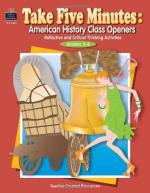|
This section contains 1,112 words (approx. 4 pages at 300 words per page) |

|
The Horseless Carriage.
It was not clear at the turn of the century whether steam, electricity, or gasoline would prove the most efficient power source for automobiles. Americans had been experimenting with mechanized road vehicles since the 1880s; called "horseless carriages," these early cars took many of their design features high, thin wheels; simple chassis; buggylike interiors; and tillers for steering from traditional horse-drawn carriages and were nearly indistinguishable from them. Charles E. Duryea of Springfield, Massachusetts; Freelan O. and Francis E. Stanley of Newton, Massachusetts; and Rollin H. White of Cleveland, Ohio, were a few of the more successful mechanics who struggled to build a reliable motorized vehicle in the 1890s.
The Stanley Steamer.
As the decade opened, it appeared that steam would win the motorization battle. The Stanley brothers' steam car had no driveshaft, no spark advance to manipulate, no irritating vibration when...
|
This section contains 1,112 words (approx. 4 pages at 300 words per page) |

|




